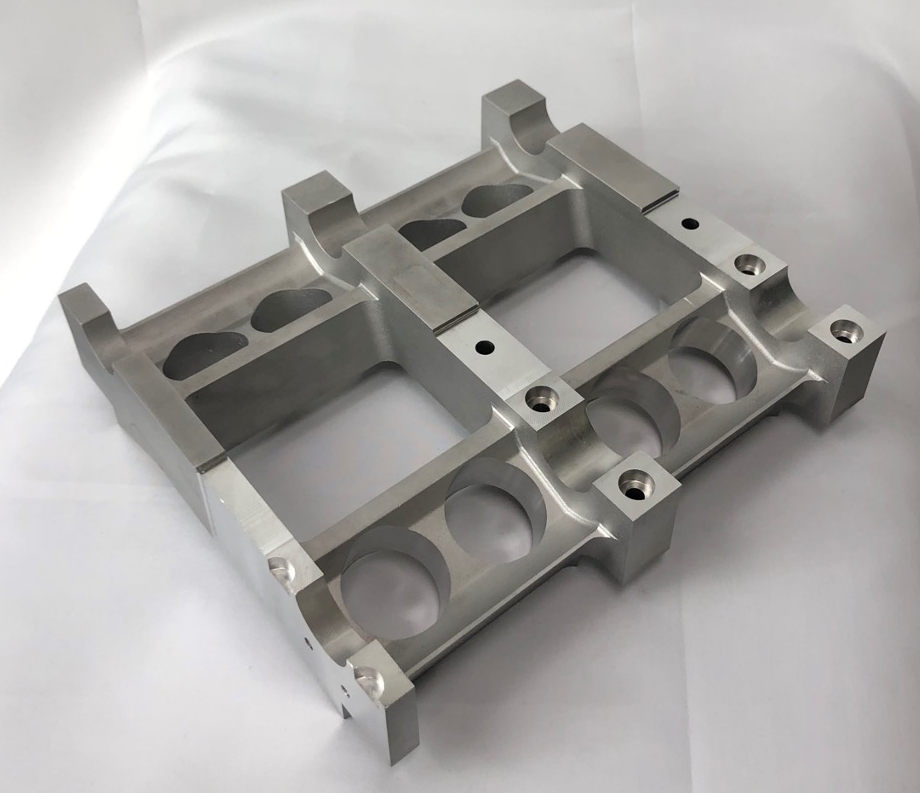To make additive manufacturing (AM) a more common process for serial production, particularly laser powder bed fusion (L-PBF), the focus of development has been to find effective and efficient solutions that address current technology challenges, specifically material processability, productivity, and repeatability. This is especially true for highly demanding industries such as aerospace, automotive, medical, and energy.
Fremont, California-based Uniformity Labs is addressing these industry challenges with the development and production of its highly advanced ultra-low porosity metal powder feedstock. Currently in production under the product brands UniFuse™ (for L-PBF) and UniJet™ (for binder jetting), and with High-Performance Scanning strategies, Uniformity Labs has dramatically improved the ability to produce high-quality, durable, and repeatable parts at scale – allowing laser additive manufacturing to become an increasingly well-established serial production tool.
The company’s pioneering technology enables significant cost savings, speed, and quality improvements across all mainstream AM printers. This dramatically impacts the AM value chain by increasing the productivity and repeatability of printing.
“A significant component of ensuring repeatability at scale production is the technical makeup of the engineered materials used,” said Uniformity founder and CEO Adam Hopkins. “There’s a big difference between having high-level material readiness for a single application—that could be the size of a handheld device like a phone—and attaining the same readiness level for a broad family of parts made with a particular material within a full-size build.”
Uniformity bridges the gap for complex parts and those made from difficult-to-process materials. In L-PBF, its UniFuse™ powders and processing parameters are optimized simultaneously for repeatable, best-in-class material properties and highest throughput printing, delivering superior mechanical performance alongside throughput increases of 1.5X to 3.0X, as compared with published specifications for similar layer thickness printing of competitor materials. “Our powders deliver comparable or superior mechanical properties, surface finish, print yield, and part reliability, and at the same time, our superior productivity allows one machine to do the work of several,” said Hopkins.
The company has a growing list of materials in production, including UniFuse™ 17-4PH, UniJet™ 17-4PH, and UniFuse™ 316L stainless steel, UniFuse™ AlSi10Mg aluminum, UniFuse™ Ti64 titanium, superalloys, and tool steels nearing release, and materials such as ultra-hard composites, titanium, and copper in the works. Uniformity has an in-house vacuum melt gas atomization production capability and shipped nearly 100 tons of additive manufacturing powders in 2022. As production level systems speed up, Uniformity will continue to grow with them as more products and parts are qualified and ramp up.
Binder Jetting
Uniformity Labs’ UniJet™ powders deliver the highest uniformity, highest yield printing, and the lowest shrinkage in binder jetting. “Uniformity powders deliver the print-to-print, and batch-to-batch part consistency that binder jetting needs to scale. To repeatably achieve uniform green part density across the bed requires uniform bed density – this is a powder problem more than a printer problem, and we have solved it,” Hopkins said.
Uniformity recently announced an agreement with Desktop Metal to qualify and deliver ultra-low porosity binder jetting powders that exhibit exceptional sintered part density and mechanical properties on Desktop Metal’s AM 2.0 binder jetting solutions. The agreement leverages Desktop Metal’s pioneering high-speed binder jetting systems and processes with Uniformity Labs’ innovative capabilities in metal powder processing to create industry-leading, integrated solutions that make it easier and cost-effective for businesses to adopt binder jetting to produce end-use metal parts at scale.
Binder jetting has unique advantages over L-PBF, such as the ability to print a part without supports and with Uniformity’s UniJet™ powder, to sinter repeatedly to the highest densities with the lowest shrinkage, meaning both the least geometric distortion even for large parts and the highest and most repeatable mechanical properties. Jetting machines are relatively less expensive than L-PBF for their size and print much faster relative to their cost. A furnace is required, and relative to L-PBF, the geometric accuracy is less, but Uniformity Labs makes the technology viable for a more comprehensive range of applications where cost and volume are critical.
Uniformity Labs is the vertical sponsor of “Session 1: Additive Manufacturing for Series Production of Metal Parts” at Additive Manufacturing Strategies, taking place in New York City from February 7-9, 2023. Adam Hopkins, Ph.D., founder and CEO of Uniformity Labs, will giving the keynote for Session 1 on February 7. Register for your ticket to attend here.
Subscribe to Our Email Newsletter
Stay up-to-date on all the latest news from the 3D printing industry and receive information and offers from third party vendors.
You May Also Like
IperionX Inks 10-Year Deal with Wisconsin Manufacturer for 80 Metric Tons of Titanium Per Year
IperionX, the Charlotte-based supplier of sustainable titanium powders used for additive manufacturing (AM) and metal injection molding (MIM), has signed a ten-year deal with United Stars, a group of industrial...
Gastronology Launches Industrial Production of 3D Printed Food for Dysphagia Patients
Food 3D printing has, in many ways, been an additive manufacturing (AM) segment looking for the right business case. While some applications are beautiful and others may or may not...
Lockheed Martin Leads $3M Investment in Q5D’s Electronics 3D Printing System
Q5D, an original equipment manufacturer (OEM) of robotic arm, hybrid additive manufacturing (AM) systems used for wire harness production, has closed a $3 million investment round. The investment arm of...
3D Printing News Briefs, April 6, 2024: Depowdering, Cybertruck Door Handles, & More
In today’s 3D Printing News Briefs, ioTech’s digital manufacturing CLAD technology is opening up opportunities for microelectronics and additive manufacturing. Hexagon and Raytheon Technologies commercially released the Simufact Additive Process...


































